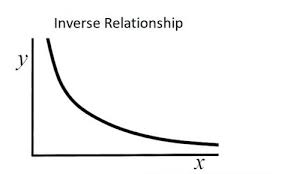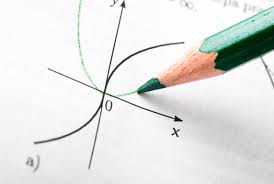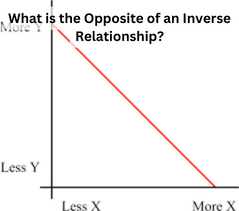Statistically speaking, a correlation exists when there is some sort of connection between two variables. If a shift in one variable causes a corresponding shift in another, then the two variables are correlated. The strength and direction of a link can be determined by its correlation.
When two variables move in tandem, we say that they are positively correlated.
Two variables with opposite directions of change are said to have an inverse correlation.
Negative correlation is another name for inverse correlation.
One of the many possible interactions between two or more variables in a relationship analysis is an inverse correlation. The term “inverse correlation” can also refer to a negative association. Learning about the numerous kinds of inverse relationships can help you in a wide range of careers.
Also Read: 8 Reasons Why Is Dairy Queen So Expensive?
Definition of Inverse Relationship?

To what extent does inverse connection entail? In regression analysis, the inverse relationship is represented by a negative correlation, which states that when one variable rises, the other falls and visa versa. Interest rates and consumer expenditure are a common illustration of such a connection.
Consumers are less likely to make purchases and more likely to put money into savings as interest rates rise. There is a negative correlation between rising unemployment and consumer expenditure.
Assume we have a relation R of the type (x, y): (x, y) A and (y, y) B, and that R-1 stands for R’s inverse, which is written as (y, x): (y, x) B and (x, y) A. In the event that R travels from point A to point B, then R-1 travels in the other direction, from point B to point A. Thus, if (x, y) is less than R, then (y, x) is less than R minus 1, and vice versa. In addition, we recognise that R is a subset of A x B, and R-1 is a subset of B x A, of the Cartesian product of sets.
Opposite of Inverse Relationship

Direct relationships are the polar opposite of inverse ones. A relationship between two or more physical quantities might be either direct or inverse. Whereas there is a direct correlation between temperature and pressure, volume and pressure are inversely related.
When one factor increases, the other decreases, as in an inverse relationship. For instance, if the pressure is raised, the volume must necessarily fall.
It is possible for both physical quantities to rise or decrease at the same time in a direct relationship. If we take pressure as an example, we see that as it rises, so does the temperature. When the atmospheric pressure drops, the temperature also drops. There’s a one-to-one correlation between a circle’s area and its radius.
Read More: What Are Best Dark Sky Alternatives For iOS 16 In 2023?
Inverse – The Opposite of a Direct Relationship
But the X and Y variables themselves, rather than the functions, can have an inverse connection. The direct relationship, Y = f(X), states that Y grows as X grows, while the inverse relationship, X = f(Y), states that X grows as Y grows.
Given the equation Y = f(X), if X were increased, Y would decrease.
More Inverse Relationship Examples
- Inverse relationships occur frequently in the real world. The time and distance covered while travelling. The shorter the time it takes to get from A to B when travelling at a higher speed.
- Electrical current and the resulting resistance. An increase in resistance has the effect of decreasing the flow of electricity.
- Budgeting one’s income and saving a portion of it. As one’s disposable income decreases, one must rely on their savings more.
- Federal funding levels and the unemployment rate. The unemployment rate tends to drop as government spending rises.
The Phillips Curve, which plots the relationship between the unemployment rate and price increases, shows a correlation between the two variables.
Probably the most well-known illustration of a counterfactual connection is the Phillips Curve.
A.W. Phillips theorised that the unemployment rate and inflation would always move in the opposite direction. The hypothesis predicts that as economies expand, inflation will follow, resulting in a rise in the labour force and a decline in unemployment.
In actuality, the unemployment rate falls because more jobs are generated as the government spends more money. After an increase in government spending, higher salaries are passed on to workers, giving them more discretionary income.
However, companies must bear increased compensation costs, which are ultimately passed on to consumers in the form of higher prices. Thus, the inflation rate increases as the unemployment rate decreases.
Direct vs Indirect Relationship Difference

When x is increased, y is also increased by the same magnitude, and when x is decreased, y decreases. As a result, the resulting graph is a straight line. As x increases, y decreases, and vice versa, a change in x causes a rise in y. This results in a curved graph with an initial steep decrease that flattens out at higher x values.
Conclusion
When one parameter’s value drops as the other increases, the two parameters involved in the interaction are said to have an inverse relationship. It’s commonly referred to as a “bad” relationship.
Keep in mind that there are actually two different associations that can be described using the word “inverse connection.” It is a mathematical term for a function whose domain is the interval between two other functions. When one function is inverted, the result is the second function. It could also mean the relationship between two variables, where one variable’s value lowers (rises) as the other’s does (falls).

